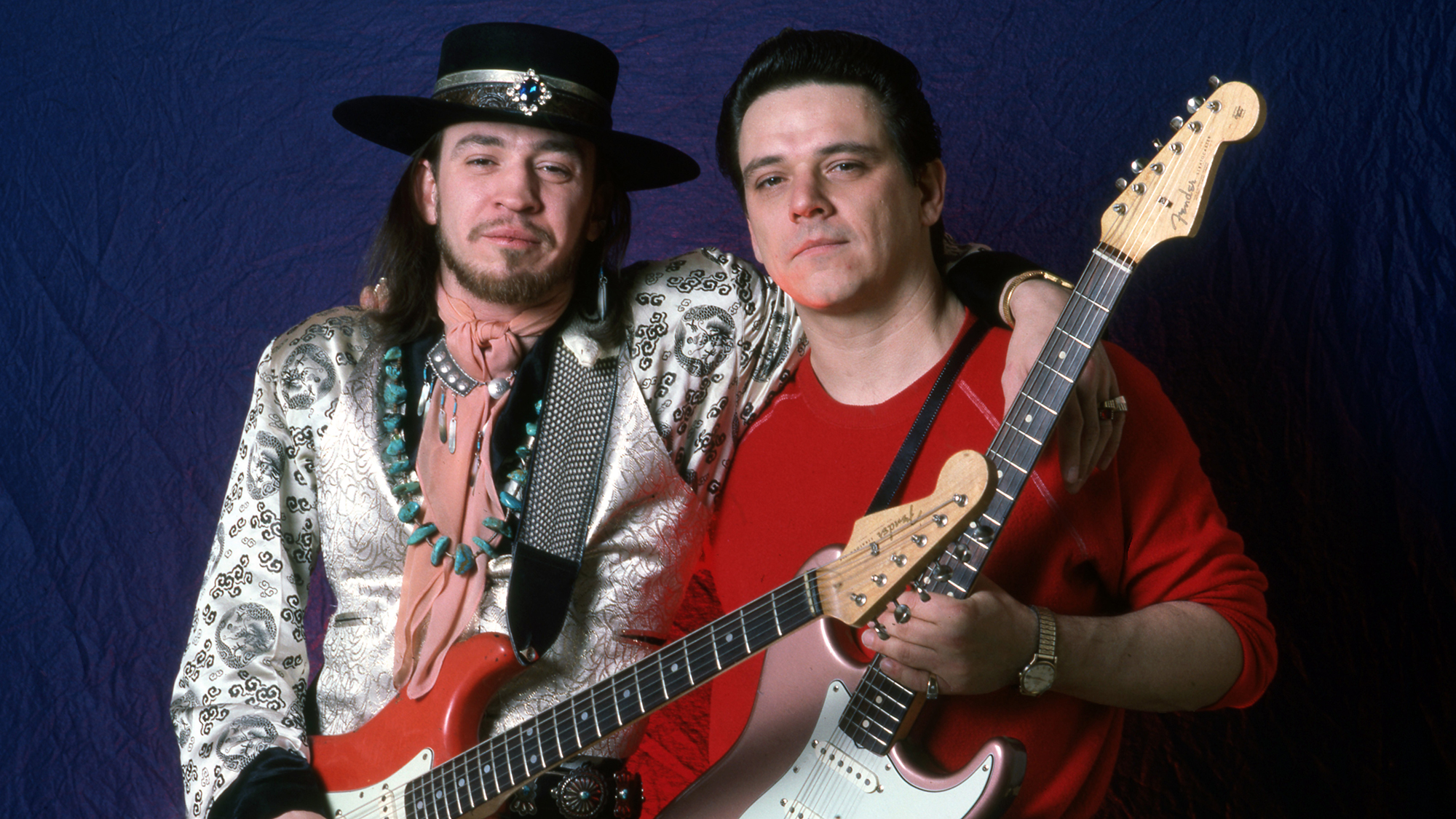The history of the Gibson ES-330
We take an in-depth look at the background, development and evolution of Gibson’s iconic double-cut thinline hollowbody electric...
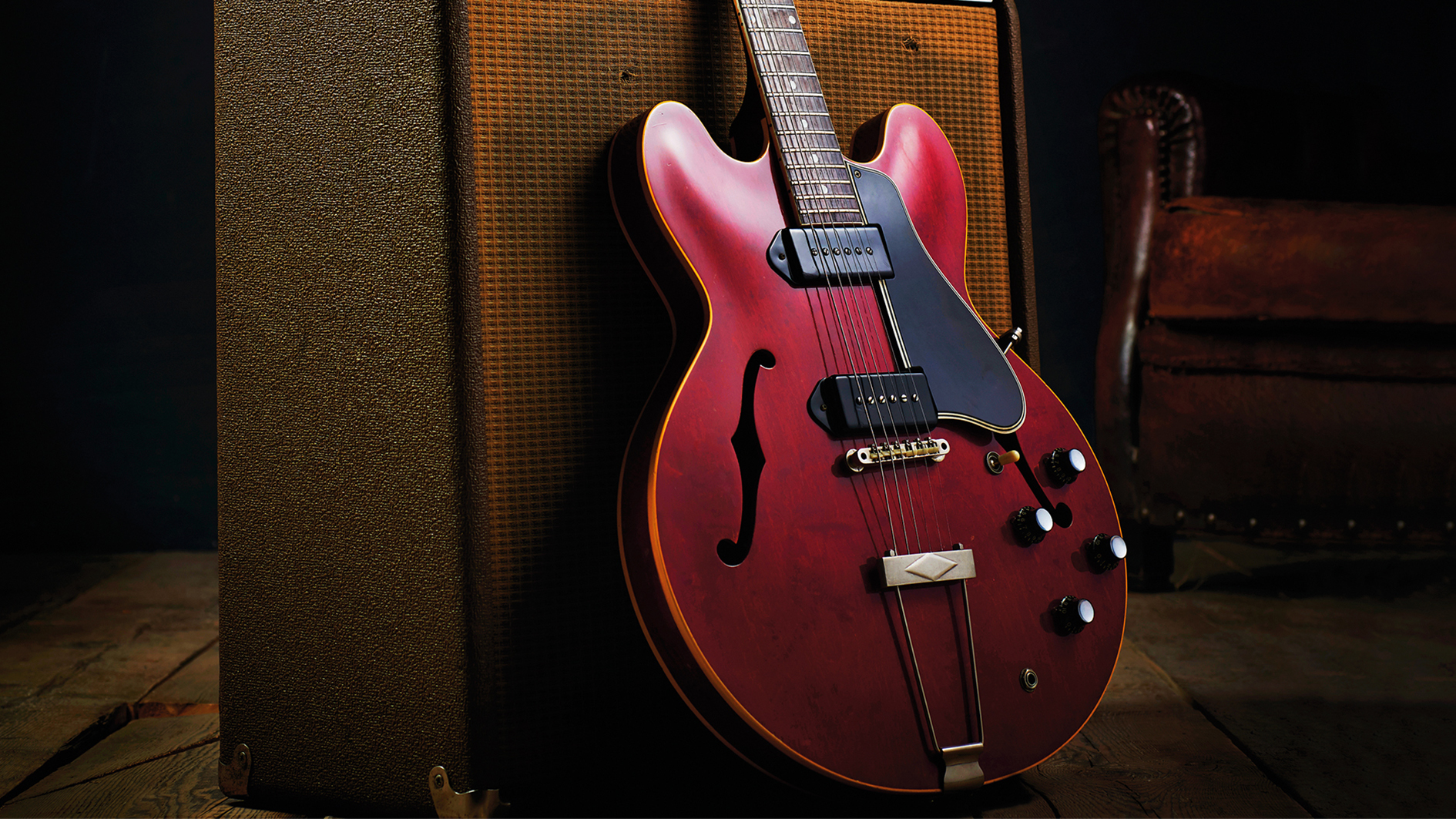
Released in 1959, the single P-90 pickup ES-330T and dual P-90 ES-330TD models represent decades of innovation as Gibson’s premier double-cutaway thinline hollowbody electric archtops.
The ES-330’s lineage can be traced back to 1936 when Gibson released their first Electric Spanish (ES) archtop guitar, the ES-150, a jazzbox electrified with a ‘blade’ single-coil pickup (commonly referred to as a ‘Charlie Christian’ pickup).
In 1938, the ES-150 was followed up by a less-expensive alternative, the ES-100 (renamed the ES-125 in 1941), and in 1939, the top-of-the-range ES-250 appeared (soon replaced, in 1940, by the ES-300).
Initial sales of Gibson’s novel Electric Spanish guitar range proved encouraging. During this period, the electric guitar was beginning to find its voice as a lead instrument, while cutting-edge players such as Charlie Christian increasingly stepped away from the shadows of the rhythm section and into the limelight of centre stage.
The 1950s were a period of great innovation at Gibson as new musical styles and tastes emerged
However, World War 2 temporarily halted further advancements at Gibson as far as electric guitars go and production stopped over the next couple of years. By the end of the war, Gibson was under new ownership, having been acquired by distributors Chicago Musical Instruments (CMI) in 1944, and with a fresh injection of cash, production of the ES range recommenced in earnest, albeit with some major design alterations and enhancements.
By 1946, a revised ES range consisted of the ES-125, ES-150 and ES-300, with Gibson’s first regular production Venetian/rounded cutaway electric model, the ES-350 Premier, making its debut in 1947.
Guitars from this ES line-up feature a laminate body design. At the time, this was deemed a more cost-effective and practical solution (as opposed to the solid construction of the pre-war ES range) and set the standard for future ES production.
Get The Pick Newsletter
All the latest guitar news, interviews, lessons, reviews, deals and more, direct to your inbox!
In late 1948, the ES-300 and ES-350 were augmented with dual P-90s - Gibson’s classic single-coil pickup - thus marking another step forward for the company’s ES range.
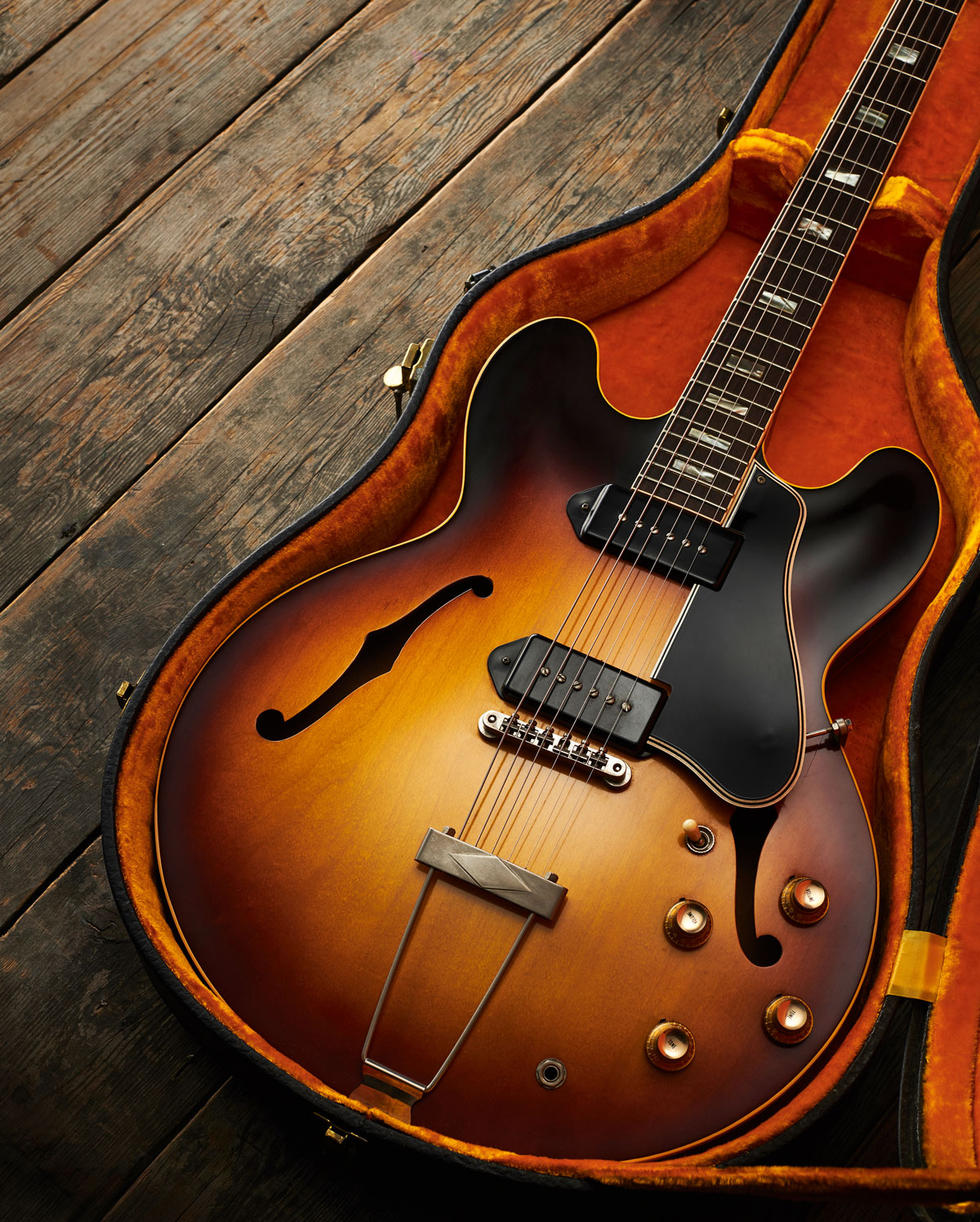
Such was the unprecedented success of the electric guitar generally that Gibson’s newly appointed president, Ted McCarty, expanded the idea to include not only a further two ES models in 1949 - the Florentine/pointed cutaway ES-175 and triple pickup ES-5 - but also electrified versions of their flagship Super 400 and L-5 archtops, the Super 400CES and L-5CES (released in 1951).
In 1952, Gibson unveiled their first solidbody electric guitar, the Les Paul Model (Goldtop) and the range soon widened to include the Junior, TV and Custom in 1954, followed by the Special in 1955.
Evidently, the 1950s were a period of great innovation at Gibson as new musical styles and tastes emerged, and, for the first time in the company’s history, in 1954 the total number of electric guitars shipped exceeded that of acoustics.
The single cutaway hollowbody electric archtops were something of a compromise between Gibson’s 3 3/8-inch-deep ES archtops and their slim solidbody electric guitars
During this time, Gibson’s owners CMI continuously pushed Ted McCarty for new electric-guitar designs, and in July 1955, the first thinlines were unveiled at the NAMM show in Chicago.
These single cutaway hollowbody electric archtops were something of a compromise between Gibson’s 3 3/8-inch-deep ES archtops and their slim solidbody electric guitars. Developed in collaboration with guitarists Billy Byrd and Hank Garland, the L-5-inspired Byrdland sat at the top of the pecking order next to the mid-priced laminate body ES-350T (‘T’ denotes ‘thinline’), while the ES-225T was offered as a less fancy alternative.
The thinline concept immediately proved popular and the range was quickly expanded to include the dual P-90-equipped ES-225TD in 1956 (‘D’ denotes ‘dual’ pickups).
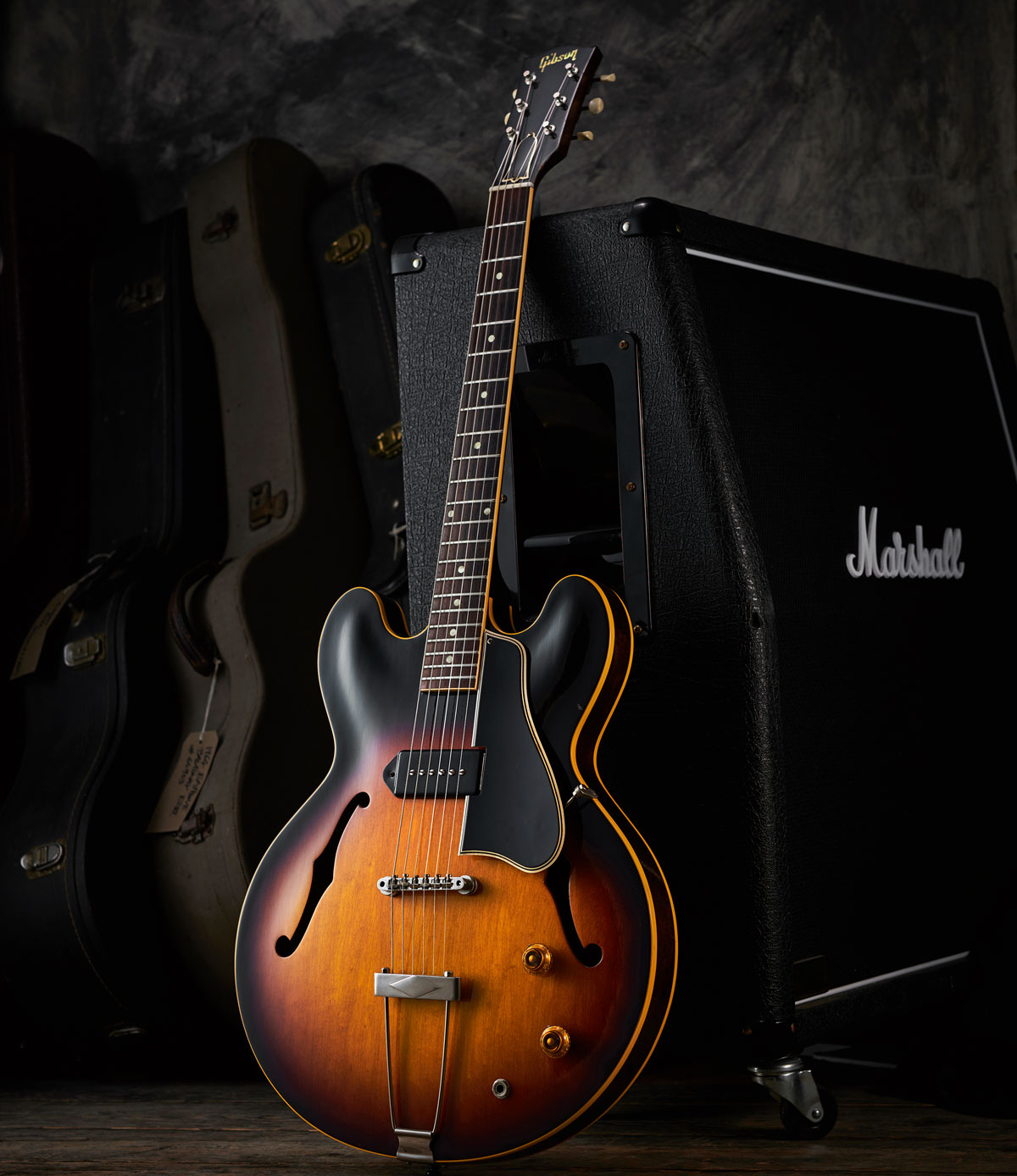
With a short 231⁄2-inch scale length both the Byrdland and ES-350T measured 21⁄4-inches deep. However, the 243⁄4-inch scale-length of the ES-225T and ES-225TD were just 13⁄4-inches deep and it’s these thinline dimensions that would soon become part of the template for Gibson’s revolutionary double cutaway thinline range - including the ES-330, ES-335, ES-345, ES-355 and Trini Lopez Standard models.
The P-90 loaded, Tune-o-matic-bridge/trapeze-tailpiece-equipped ES-330 electric archtops arrived somewhat in the shadow of their semi-acoustic, dual-PAF-humbucker-toting ES-335/345/355 double-cutaway siblings.
As per all double-cutaway electrics of the time, the ES-330’s single-bound body is constructed from laminated maple with a pressed arched top sporting two f-holes, and although comparisons are inevitable - primarily based on body shape/dimensions (being 19-inches long, 16-inches wide and 11⁄4-inches deep) - there are some major differences that set the ES-330 a world apart.
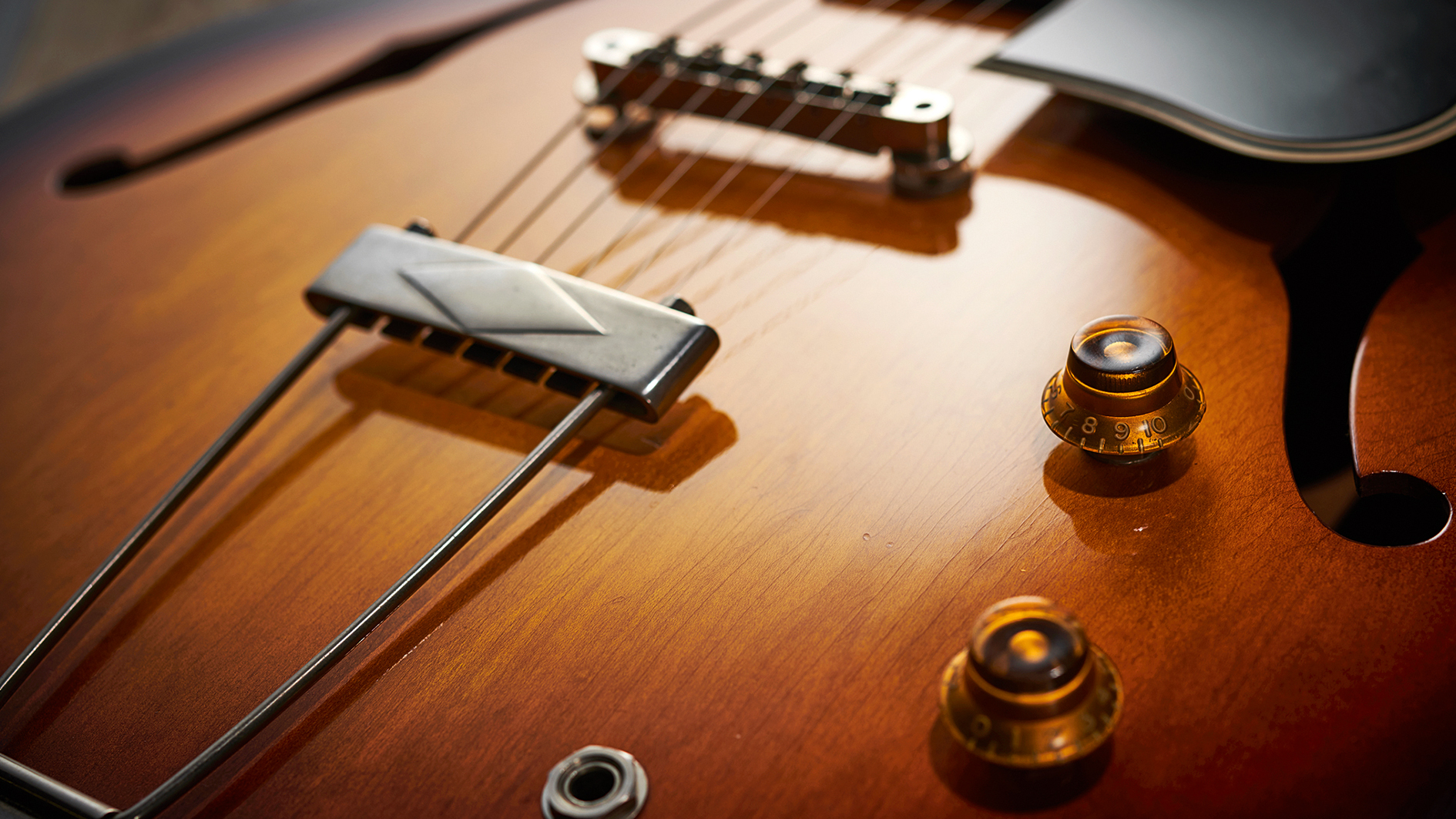
“The ES-335 came out in 1958 (it was developed in ’57, but they didn’t ship any until ’58), and the ES-330 was not released until ’59,” veteran guitar dealer and guitar author George Gruhn tells us.
Speaking to Guitarist from his Nashville vintage guitar store, Gruhn Guitars, George is celebrating 50 years in the business this year. “The 330 has the same body dimensions as the 335, but it was not anywhere near as popular and it was cheaper. The shorter neck was less appealing. It joins the body at the 16th fret, rather than the 19th-fret join of the 335. Although the 330 went to a longer 19th-fret neck like the 335 in ’68, the original shorter neck gave [players] less access to the upper registers.
Frankly, I’m not sure why Gibson made a shorter neck for the 330, but they did. I think it would have been a more popular guitar if it had the same neck as a 335.”
The popularity of high-volume electric blues and rock ’n’ roll pointed towards solidbody and semi-acoustic designs
Although perhaps less susceptible to feedback at high volume than a full-depth electric archtop, the ES-330 was generally more prone to unwanted noise than a guitar with pickups mounted into a solid body or centre block - especially one fitted with noise-cancelling PAF humbuckers (introduced on some Gibson electric guitars from 1957).
The ever-increasing popularity of high-volume electric blues and rock ’n’ roll prompted a more practical solution for guitarists that pointed towards solidbody and semi-acoustic designs, and so ES-330s took more of a back seat in terms of appeal.
With the single-pickup ES-330T being discontinued in 1962, it was left to the dual- pickup ES-330TD to carry the 330 flag.
“It was a different-sounding guitar. There is no centre block, and it has P-90s rather than humbuckers,” says George. “Otherwise, cosmetically, it’s very much like a 335, with the exception the 330 did not have the crown-shaped inlay on the peghead - it just had the pearl Gibson logo [inlay]. It also didn’t have tulip-shaped buttons on the [Kluson Deluxe] tuners - it had cheaper tuners with white oval plastic buttons.
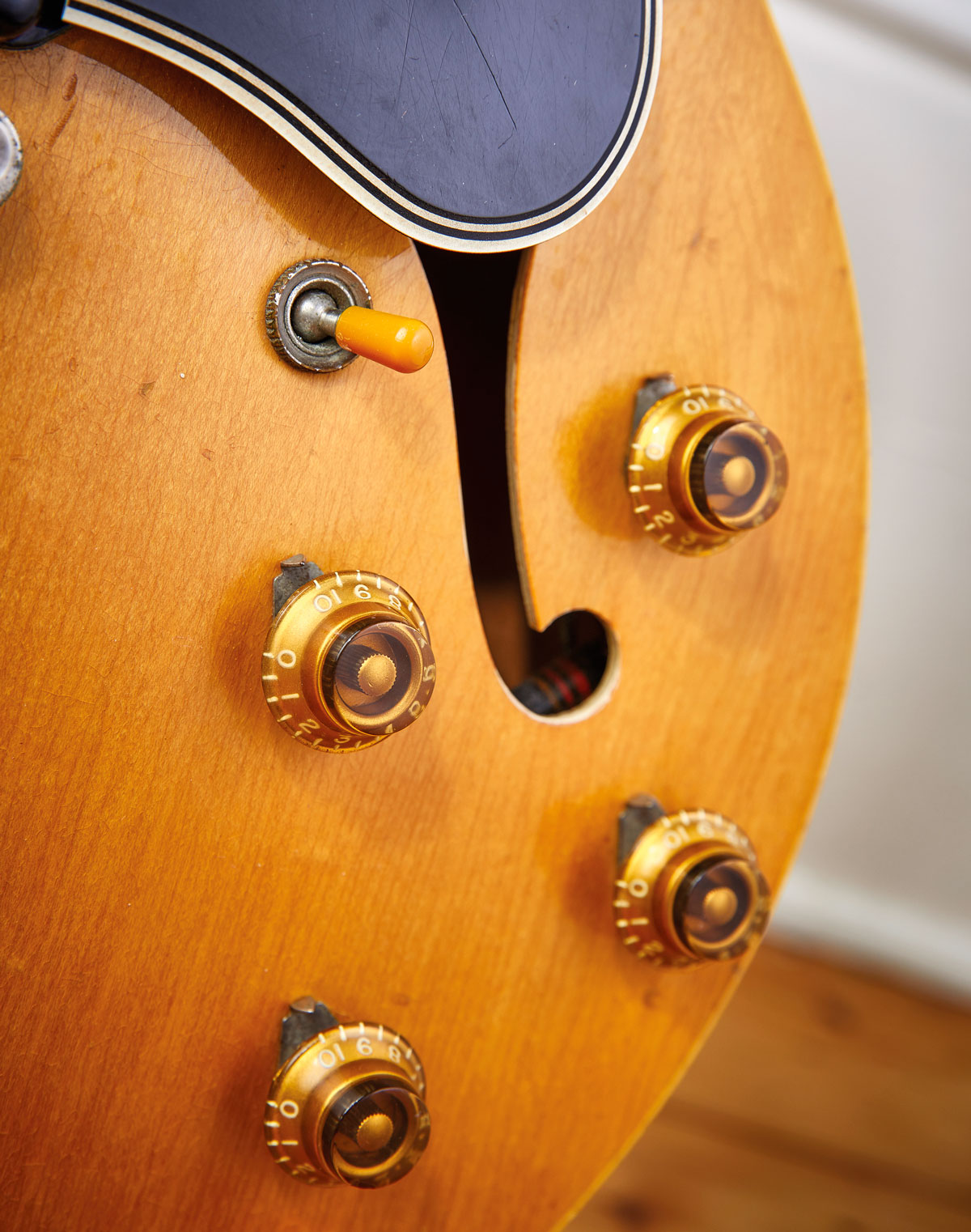
“In general, a 330 is not able to be played as loud as a guitar with a centre block, and P-90s have a different sound to humbuckers. 330s feed back a lot quicker than 335s. You’ve got a hollowbody versus a semi-hollowbody; the semi-hollow ES-335 responds much more like a solidbody guitar because it’s got a solid centre, whereas a 330 is a fully hollow guitar.
Sonically, it’s quite a different beast, and when you combine that with the pickups, you’ve got a thoroughly different sound. The sound of a 330 is not especially any different to the sound of say an ES-125TDC. An ES-125TDC is a thin[line], cutaway, double pickup (two P-90s) guitar; why is there any difference expected between the sound of that and a 330? The 330 is a double cut[away], but it’s not going to be very much different.”
Despite the fundamental differences between 330s and 335s, there are other similarities between the two, aside from body dimensions. “They went through the same profile changes you see on a 335,” says George, in reference to both instruments’ rosewood fingerboard mahogany necks.
“The necks went much shallower in ’60, and by mid ’65 they were narrower. The nuts were 1 11/16-inches [wide] to begin with, but went considerably narrower in the mid-60s.
in 1965, Gibson changed the headstock pitch from a 17 to 14-degree angle across all their electrics in order to make them less susceptible to breakage
Also, the 330’s inlays changed from dots to small blocks in ’62, like the 335. Back then, the move from dots to blocks would have been considered an upgrade. As regards the finishes, you don’t really see cherry much until ’60 [when cherry substituted natural alongside sunburst finishes]. Natural is very rare and certainly more desirable now.”
The earliest 330s feature black-plastic ‘dog-ear’ P-90 pickup covers that were, in late ’62, superseded by nickel-plated metal covers. In 1965, the ES-330TD’s hardware - including Tune-o-matic bridge, trapeze tailpiece and ‘dog-ear’ P-90 pickup covers - changed appearance for a final time with the introduction of chrome- plating as a harder wearing alternative to nickel-plating.
Also, in 1965, Gibson changed the headstock pitch from a 17 to 14-degree angle across all their electrics in order to make them less susceptible to breakage - an increasingly common problem associated with Gibson guitars.
During the mid 60s, the ES-330TD’s sunburst finish began to appear noticeably lighter, and by the late 60s, two new finishes were available: Walnut and Sparkling Burgundy. While transparent natural-style finishes, such as Walnut were popular during the late '60s, the opaque Sparkling Burgundy metallic finish was used to hide flaws in the wood created by moisture during the lamination process.
With its deep lustrous red akin to Fender’s Candy Apple Red finish, it certainly disguised these issues, although it tends to be extremely photosensitive and can fade dramatically over time to a sickly shade of brown/green!
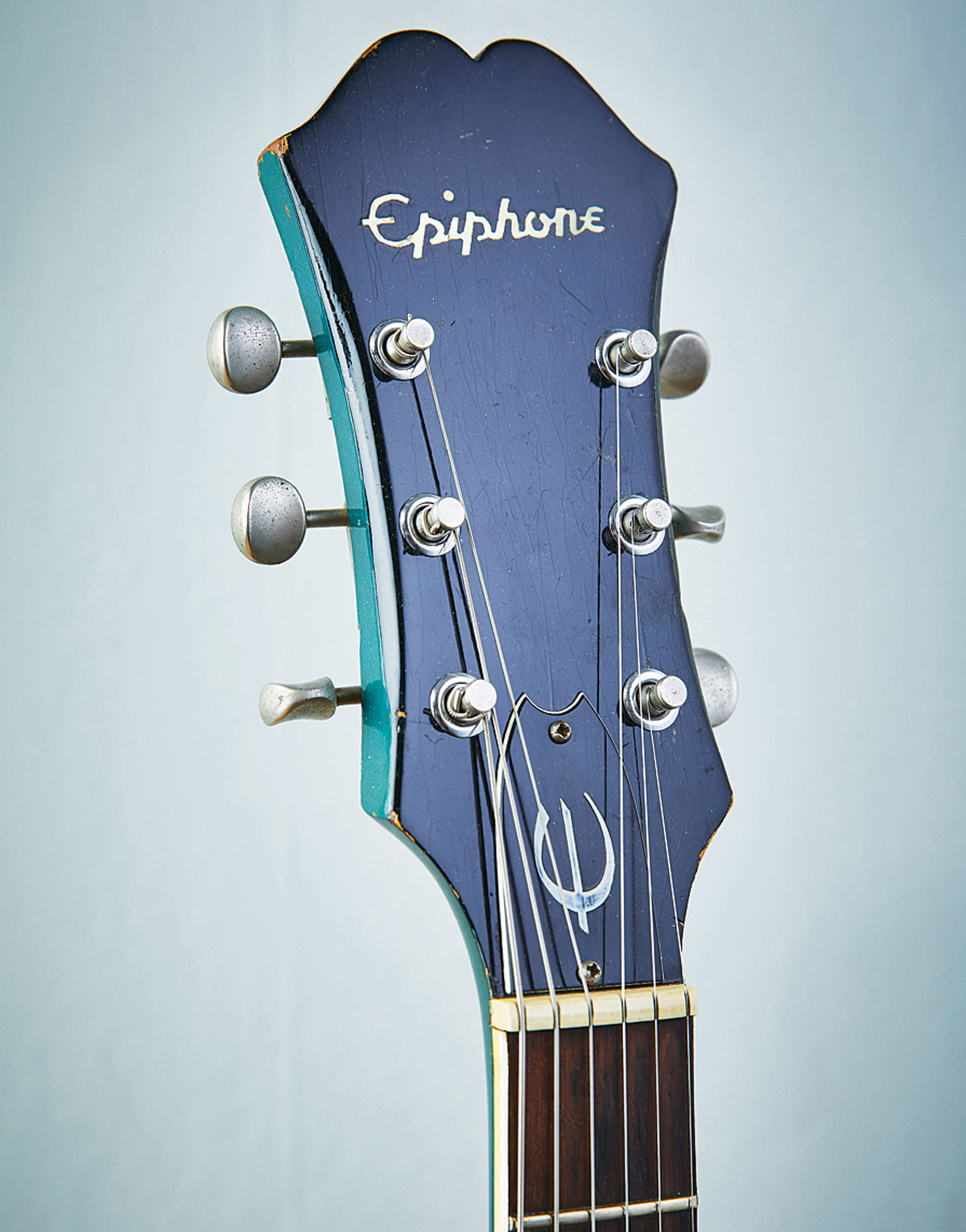
Following CMI’s acquisition of Epiphone in 1957, an Epiphone-branded version of the ES-330, the Casino, was produced at Gibson’s Kalamazoo factory from 1961 until 1969, when CMI was taken over by the Ecuadorian Company Ltd/ECL (renamed Norlin later in 1970). Although the Casino ultimately gained a great deal more publicity than the ES-330 as a preferred guitar of The Beatles (McCartney, Lennon and Harrison all acquired Casinos), there is little difference with regards to basic design features between the two instruments.
“Interestingly, the Casino is really similar to the 330,” agrees George. “They don’t sound any different from a 330, and they don’t play much different, but The Beatles association makes those somewhat popular, even today. They’re popular guitars, if only through association with The Beatles.”
As they entered the '70s Norlin-era, it was clear the guitar production bore little resemblance to the golden era of the '50s and '60s
Following Ted McCarty’s departure from Gibson in mid-1966, ES-330TD sales steadily declined throughout the late 60s as the era of hard rock unfolded and, by 1972, the model was discontinued. “When Ted left, they cheapened things,” recalls George.
“There were economic and managerial changes. When Stan Rendell came in as president after Ted McCarty, he changed a lot of things because he was busy saving money. He was streamlining operations and cutting costs.
There was a lot of change at that point. Gibson were still owned by CMI, but the company had put in new management, and the management didn’t give a damn about guitars - they cared about cutting corners. It was no longer run by people who truly had their heart in it. It was more accountant types.”
As they entered the Norlin-era of the '70s, it was clear Gibson’s guitar production bore little resemblance to the Kalamazoo factory’s golden era of the 50s and 60s. “I’ve been in business for over 50 years,” says George. “I started in January 1970. It’s hard to believe that 1970 is the year
I consider to be responsible for the worst crap in American guitar-making history! A lot of guitars are [made] better now than they were made 50 years ago. 1960 was much better than 1970. Thankfully, things have slowly improved since then.”
Rod Brakes is a music journalist with an expertise in guitars. Having spent many years at the coalface as a guitar dealer and tech, Rod's more recent work as a writer covering artists, industry pros and gear includes contributions for leading publications and websites such as Guitarist, Total Guitar, Guitar World, Guitar Player and MusicRadar in addition to specialist music books, blogs and social media. He is also a lifelong musician.
“This would make for the perfect first guitar for any style of player whether they’re trying to imitate John Mayer or John Petrucci”: Mooer MSC10 Pro review
“The most in-demand mods straight from the factory”: Fender’s elevated Player II Modified line brings the firm’s most sought-after guitar upgrades to the masses






![John Mayer and Bob Weir [left] of Dead & Company photographed against a grey background. Mayer wears a blue overshirt and has his signature Silver Sky on his shoulder. Weir wears grey and a bolo tie.](https://cdn.mos.cms.futurecdn.net/C6niSAybzVCHoYcpJ8ZZgE.jpg)

![A black-and-white action shot of Sergeant Thunderhoof perform live: [from left] Mark Sayer, Dan Flitcroft, Jim Camp and Josh Gallop](https://cdn.mos.cms.futurecdn.net/am3UhJbsxAE239XRRZ8zC8.jpg)


